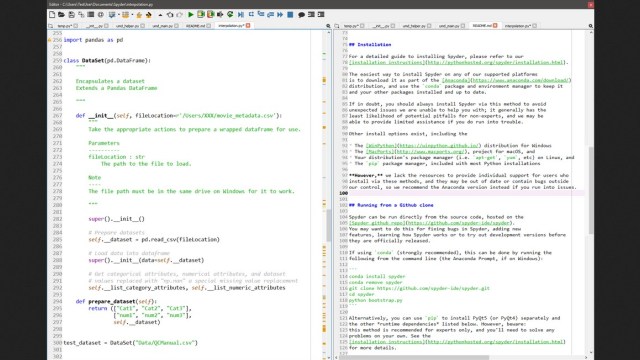


A debugger linked to IPdb, for step-by-step execution.A Help pane able to retrieve and render rich text documentation on functions, classes and methods automatically or on-demand.The ability to explore and edit variables from a GUI.An editor with syntax highlighting, introspection, code completion.QtPy, a thin abstraction layer developed by the Spyder project and later adopted by multiple other packages, provides the flexibility to use either backend. Spyder uses Qt for its GUI and is designed to use either of the PyQt or PySide Python bindings. It is available cross-platform through Anaconda, on Windows, on macOS through MacPorts, and on major Linux distributions such as Arch Linux, Debian, Fedora, Gentoo Linux, openSUSE and Ubuntu.

Spyder is extensible with first-party and third-party plugins, includes support for interactive tools for data inspection and embeds Python-specific code quality assurance and introspection instruments, such as Pyflakes, Pylint and Rope. Initially created and developed by Pierre Raybaut in 2009, since 2012 Spyder has been maintained and continuously improved by a team of scientific Python developers and the community. Spyder integrates with a number of prominent packages in the scientific Python stack, including NumPy, SciPy, Matplotlib, pandas, IPython, SymPy and Cython, as well as other open-source software. Spyder is an open-source cross-platform integrated development environment (IDE) for scientific programming in the Python language.


 0 kommentar(er)
0 kommentar(er)
